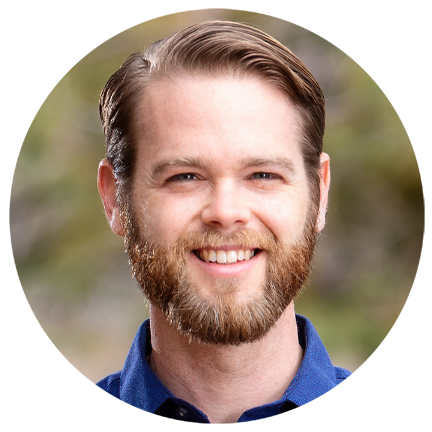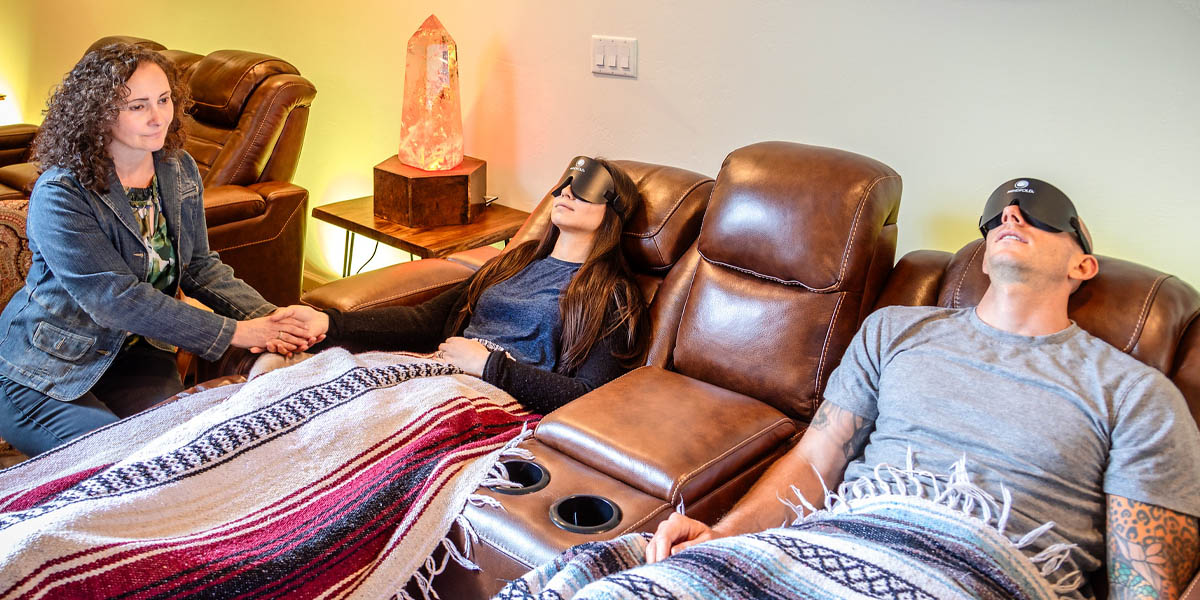If you suffer from post-traumatic stress disorder (PTSD), you know the extent to which it can prevent you from living your life. This disorder develops as a result of unresolved trauma and keeps sufferers in a state of constant hypervigilance. The fight-or-flight mode that those with PTSD become stuck in is simply not sustainable for long periods of time. And it can have far-reaching impacts on your health.
PTSD causes significant suffering. “PTSD is associated with high degrees of disability, making it difficult for an individual to maintain employment and social wellness,” says a study published by the U.S. National Institutes of Health’s National Library of Medicine. “According to DSM-5, in both community and veteran populations, PTSD is associated with poor social and family relationships, excessive absence from work, and lower-income, educational, and occupational success.”
The good news is that the symptoms of PTSD are fairly easy to remedy. Creating sustainable change, however, requires us to dig deeper and address this problem at its core. And this is just what The Sanctuary’s holistic PTSD treatment program is designed to do.
Ketamine-assisted treatment (KAT) is one tool that we use to achieve this. Our IV therapies take place on campus in our comfortable drip clinic and integrate fully with our holistic healing program. Here, we’ll take a look at:
- How we holistically heal PTSD
- Ketamine’s role in the healing journey
- How we safely administer KAT at The Sanctuary
- What clients say about their KAT experiences
- How to know if ketamine-assisted treatment is right for you
Holistically Healing PTSD
The traditional paradigm of PTSD recovery focuses on symptom management: stopping the behaviors that result from trauma. But without doing the deeper work, those symptoms can always come back.
This is why PTSD is so often resistant to treatment – hence the growing popularity of psychedelics and other alternative therapies. “Many patients remain symptomatic and functionally impaired despite standard treatments and require alternative interventions,” says psychiatrist Ralph J. Koek, MD. Unfortunately, many people who struggle with PTSD do so for years or even decades until they find something that works for them.
At The Sanctuary, we understand that treating PTSD is complex. Yes, we help people alleviate their suffering, reduce their symptoms and get back into balance. But in order to truly heal, we need to address the cause of the problem: our trauma and the beliefs we create around it.
Our holistic program uses various healing modalities to somatically release trauma stored in the body. We then take a multi-level approach to address trauma where it lives, in the deeper levels of your being. This is sometimes hard to do with conventional therapy alone. And this is where ketamine-assisted treatment can be very helpful.
How Ketamine Can Help
Ketamine’s role in healing PTSD is two-fold: ketamine infusion, in and of itself, can reduce PTSD symptoms after just a few sessions. It can also be useful for helping clients access their subconscious in order to resolve issues that live well beneath the surface. And this is what we do at The Sanctuary by integrating ketamine-assisted treatment into our holistic healing process.
Reducing PTSD Symptoms
Repeated ketamine infusions are shown to reduce PTSD symptom severity. One study by The Mount Sinai School of Medicine found that participants’ improvement was “rapid and maintained for several weeks afterward.” Adriana Feder, MD, Associate Professor of Psychiatry at the Icahn School of Medicine at Mount Sinai and lead author of the study, says: “The data suggests repeated IV ketamine is a promising treatment for people who suffer from PTSD and provides evidentiary support to warrant future studies to determine how we can maintain this rapid and robust response over time.”
Some research shows that ketamine is more effective than antidepressants, which can take much longer to work and often come with negative side effects. Ketamine infusions can reduce overall symptoms within 24 hours of treatment. But, according to the above study, “In contrast, widely used antidepressants target different neurotransmitters — serotonin, norepinephrine, and dopamine — and can take weeks to even months to work. These drugs are considered ineffective in at least one-third of cases, and only partially effective in an additional third.”
For more on antidepressants, see our video on the difficulty in stopping SSRIs.
A Complement to Talk Therapy
KAT and other alternative therapies can also provide a safe avenue for those who struggle with talk therapy. Verbalizing traumas can often be retraumatizing, and making progress in this way can take a very long time. Because of this, many clients become discouraged and drop out before they see results. “Trauma-focused exposure-based psychotherapies can be quite challenging for patients with PTSD,” says Mount Sinai’s report, “initially triggering heightened arousal and avoidance that can result in treatment dropout prior to achieving therapeutic benefits.”
But ketamine-assisted treatment can allow clients to access parts of themselves they may not have been able to for a very long time. And this is all the more effective when carried out in the right treatment setting.
Digging Deeper
Ketamine-assisted treatment provides eligible clients at The Sanctuary with new opportunities for significant breakthroughs. Clients who choose to participate in this therapy find that it allows them to:
- Access their emotions
- Trust their own feelings
- Begin to have a different relationship with their disorder
This important perceptual shift allows makes many clients more hopeful in their ability to recover. They can then bring that new perspective into their therapy work, aiding their progress towards transforming and healing their trauma.
What to Expect in a Ketamine Therapy Session
At The Sanctuary, we hold ketamine therapy sessions in a calming environment, in a ceremonial manner. Each session begins with an intention setting. The infusion is then administered by one of our two, on-staff doctors. Clients are also accompanied by two to three support staff who ensure they feel safe and supported throughout the process.
Ketamine sessions involve a maximum of six clients at a time. After the infusion is over, these groups end with a brief sharing circle and a dinner shared with other group members. The following day, you’ll have a check-in with your therapist to more thoroughly process your experience and integrate it into your larger journey.
Is Ketamine-assisted Treatment Right for You?
All treatment programs at The Sanctuary begin with a thorough intake and evaluation. During this process, our medical staff will screen you for candidacy and give you all the necessary information. If you decide to pursue KAT and your clinical team determines that you’re eligible, you’ll start treatment during the second week of your stay. Those who choose to participate in this therapy typically receive two sessions per week, for three weeks (six treatments in total).
One former client calls The Sanctuary:
“A holistic recovery program aimed at treating the root causes of disease and addiction rather than focusing on treating the symptoms.”
And this is certainly true of our approach to healing PTSD. Ketamine is a safe, powerful, and effective tool for helping us reach and treat the causes of these debilitating trauma symptoms. And for those who choose to use it, it can help you make the most of this once-in-a-lifetime opportunity to transform.
Are you interested in ketamine-assisted treatment to heal from PTSD? Contact our admissions team today to learn more.
Learn More About Ketamine-Assisted Treatment:
- How Ketamine Therapy Is Used For Addiction
- Is Ketamine Therapy Addictive
- Ketamine-Assisted Group Therapy

Dr. Forrest is a licensed Naturopathic Physician specializing in retreat-style holistic medicine, natural detoxification and cleansing, mind/body medicine, and regenerative medicine. Dr. Forrest brings to his work a sense of humility, respect, and compassion that is too often absent in the sterile, rigid world of modern medicine. He is deeply honored and grateful to be continuing this work as part of the community and healing that is taking place at the Sanctuary. [email protected]

